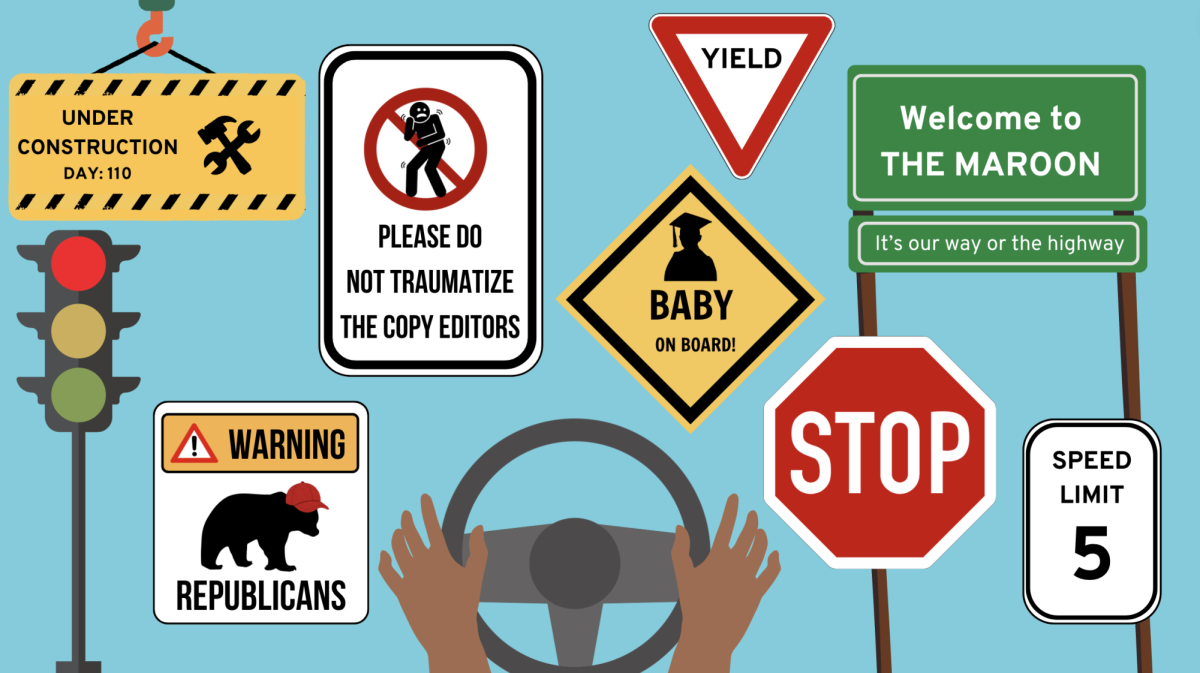At around 10:15 p.m. on January 5, Ethan Stanislawski, a fourth-year in the College and a Maroon columnist, turned around in front of the Ray School on South Kimbark Avenue to find a handgun pointed at his head.
Ethan had just picked up a pizza from Edwardo’s on East 57th Street, and now he was being mugged.
“Give me all your money,” the gunman said. “I’ll shoot you.”
He reached into Ethan’s pocket and removed his wallet. Not taking any chances, Ethan handed over his cell phone and keys. Then the gunman told him to scram: “You have five seconds to run. One…two…”
Unless you’re friends with Ethan, you probably haven’t heard about this incident, which took place two days before winter quarter began. Despite occurring two blocks from campus, in close proximity to places like the Medici and University Market, this crime failed to generate a safety awareness alert.
I was initially frustrated to learn of this incident through word of mouth. After the administration’s promises about security back in November, I expected to be informed the next time a fellow student had an encounter with a handgun near campus. Safety awareness alerts, which are posted around campus and e-mailed to listhost subscribers, seemed an acceptable medium.To my mind, there was no doubt that this crime necessitated notifying the community.
Then I spoke with Duel Richardson, whose lengthy job title—Director of Neighborhood Relations/Educational Programs in the Office of Community Affairs—does not convey the full extent of his long-standing contribution to the U of C, which includes issuing the awareness alerts. Richardson said the warnings are controversial: Some people fear that frequent alerts cause unnecessary angst, while others “want every detail about every crime, where it happened, and when.”
Under the current system, the only incidents that trigger automatic alerts are crimes that occur on campus, sexual assaults, and homicides. Crimes that take place “very close to campus, although not technically on campus,” force administrators “to make a judgment.”
In this case, administrators decided against issuing an alert, although they did send out a related “safety awareness tip” on January 7, warning community members to avoid carrying unneeded credit cards and social security information.
With this knowledge, an issue I had seen as black and white started showing shades of gray. Just as there is no easy answer to the crime question, there is also no infallible rule for when to issue a safety alert.
Nonetheless, I believe that the U of C needs to be more proactive about informing the community. Such a service is not fear-mongering; it is necessary in the aftermath of violent crimes. Many of us continue to cling to a false sense of security, and timely alerts would help to dispel these illusions.
Until hearing of Ethan’s mugging, for instance, I regarded the strip of shops and restaurants on 57th Street as something of a safe zone. Not only is the area well lit, but it is one of the few places in Hyde Park that can be considered lively on any given night. A few steps away, however, street smarts are once again requisite. Ethan unfortunately was taught this lesson the hard way, and unless his incident is publicized, no one will be able to learn from his example.
The U of C should consider mounting a publicity campaign to better inform the community about the wide array of security services now available. In addition to providing information about a new crime analysis website that the University has decided to develop, such an effort could decrease confusion about the safety awareness program and the cAlert emergency notification system, which are in fact two different entities.
Furthermore, a publicity campaign would attract new subscribers to both programs, greatly improving their utility. Undoubtedly, if notified, many members of the community would avail themselves of the accurate and timely information that constitutes another line of defense beyond blue lights, security cameras, and UCPD cruisers.
Ethan summed things up best. He described his mugging as “a crime that happens in a city. It’s going to happen,” he said. “There’s no way it’s not going to happen to someone.”
When it does happen, I just hope the University makes the information available, to everyone who wants it.







